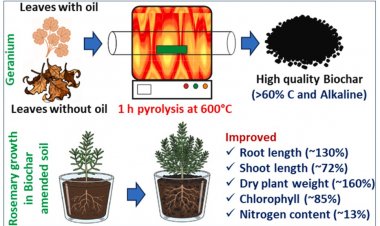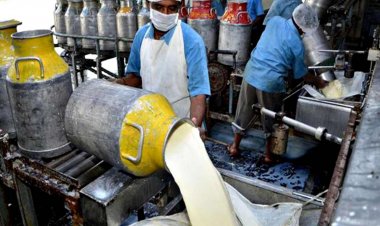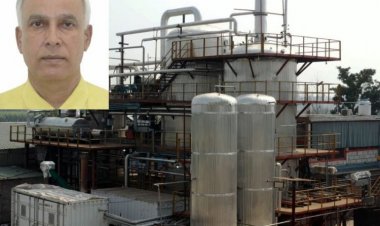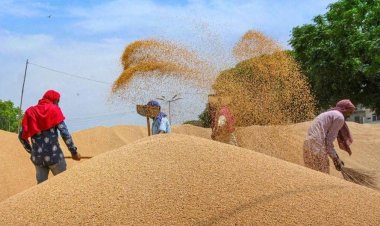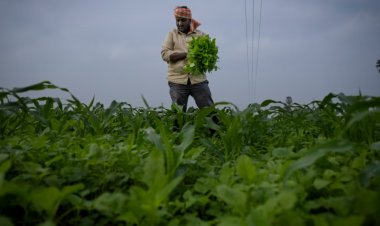The Paradox of Wheat: Record Production, Yet Rising Concerns
As the population expands and dietary preferences shift, wheat consumption is on the rise, but climate change is causing more frequent weather-related production issues.
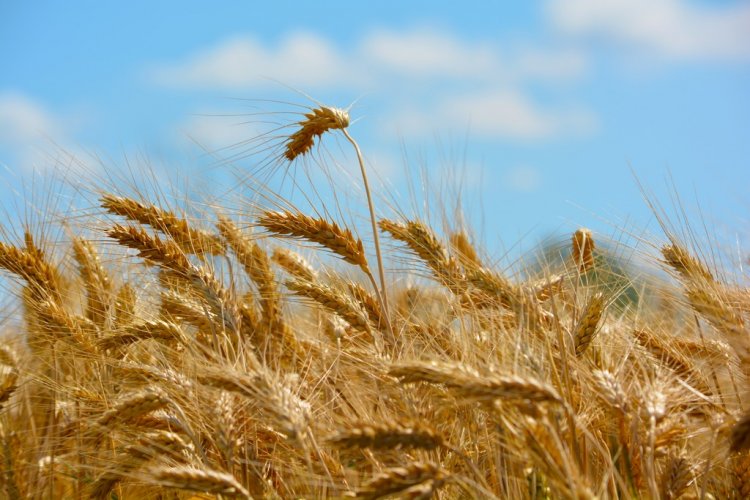
The continuous rise in wheat prices amid government data of record wheat production, government procurement being below target for the third year, and wheat stock in the central pool reaching a low level is a sign of a major wheat crisis. This is an issue that can also change the notion of breaking the wheat-rice crop cycle. On August 1, 2024, there were 268.1 lakh tonnes of wheat in the central pool, which is more than the 266.5 lakh tonnes at the same time in 2022 but is the lowest in 16 years since 2008. This situation of wheat stock weakens India's claim of food grain surplus because the government has banned wheat exports for the last two years and has imposed restrictions like stock limits in the domestic market.
On the other hand, the situation in the case of rice is opposite to that of wheat. Except for the last two years, in August, the stock of wheat in the central pool was usually more than that of rice. After the Rabi crop of wheat, government procurement stops in June, and the stock remains at a high level, whereas in the case of rice, the government procurement season starts in October, so the stock remains low in August. But this is not the case now. In the year 2015, on August 1, the stock of rice in the central pool was almost half that of wheat, whereas, on August 1 this year, the stock of wheat in the central pool was about 60 percent compared to rice.
Stock in Central Pool as on 1st August (lakh tonnes)
|
|
Wheat |
Rice |
|
2015 |
367.78 |
186.61 |
|
2016 |
268.79 |
221.39 |
|
2017 |
300.59 |
237.02 |
|
2018 |
408.58 |
249.44 |
|
2019 |
435.88 |
328.85 |
|
2020 |
513.28 |
350.97 |
|
2021 |
564.80 |
444.59 |
|
2022 |
266.45 |
409.88 |
|
2023 |
280.39 |
374.37 |
|
2024 |
268.12 |
454.83 |
Source: Department of Food and Public Distribution
On August 1, 2024, there were 454.8 lakh tonnes of rice in the central pool. The ban on the export of non-Basmati white rice is also a reason for this. India exported 212.10 lakh tonnes of rice in the year 2021-22. At the same time, in 2022-23, exports stood at 223.5 lakh tonnes, and India remained the largest rice-exporting country in the world. India's share in the global market had reached 40 percent. However, given rising prices in the domestic market and decreased production due to poor monsoon, the government banned the export of non-Basmati white rice. Additionally, a 20 percent export duty has been imposed on Sela rice, and fixed a minimum export price (MEP) of $950 per tonne for Basmati exports. Due to this, India's rice exports came down to 163.6 lakh tonnes in 2023-24.
Wheat exports were 72.4 lakh tonnes in 2021-22. After that, it was 46.9 lakh tonnes in 2022-23, and 1.9 lakh tonnes of wheat were exported in 2023-24. The government banned wheat exports in May 2022 as wheat production in the country was affected due to adverse weather. This ban has been in force since then. However, the government is releasing record production figures.
The situation is different regarding the agro-climatic zones in the case of wheat and rice. Wheat is only a single crop in the Rabi season, while rice is a crop in both the Kharif and Rabi seasons in different parts of the country. Wheat production is possible only in the agro-climatic regions of northern, western, and central India. There are only eight states in the country where more than 20 lakh tonnes of wheat are produced annually, while in the case of rice, the number of such states is 16, indicating that the area of rice cultivation is quite extensive. Among the wheat-producing states, Punjab, Haryana, Uttar Pradesh, and Madhya Pradesh produce 76 percent of the country's wheat.
Wheat consumption is increasing due to the growing population and changes in food habits in the country, while due to climate change, wheat production is affected by exterme weather events almost every year. In the last few years, there has been less cold in November and December, while the temperature rises rapidly in February-March when the grain is forming in the wheat crop. In this way, the changing mood of the weather is affecting the production of wheat.
According to government estimates, wheat consumption is around 10.4 crore tonnes. But the reality is that the consumption of wheat in the country is increasing continuously. The consumption of wheat is no longer limited to making chapatis and it is highly consumption in traditional states. Now, the consumption of wheat is also increasing continuously in rice-consuming states. The way the scope of consumption of all products made from the bakery industry, from pizza, and burgers to flour and semolina is increasing, the consumption of wheat products is increasing all over the country.
According to the Household Expenditure Survey of the year 2002-23, the per capita monthly consumption of wheat in rural areas is 3.9 kg and in cities, it is 3.6 kg. However, this figure does not present the complete picture of consumption. At the same time, in the case of rice, the products prepared from it are limited. Also, rice production has increased due to increased irrigation facilities in many states of the country. In such a situation, there is a need to look at the production and consumption of wheat and rice differently because now the policy thinking of breaking the wheat-rice cycle may also have to be changed. Also, to meet the increasing consumption of wheat, we will have to work on ways to increase production that can boost wheat production despite climate change and temperature variations, as there is little possibility of increasing the area of wheat production.



 Join the RuralVoice whatsapp group
Join the RuralVoice whatsapp group






























